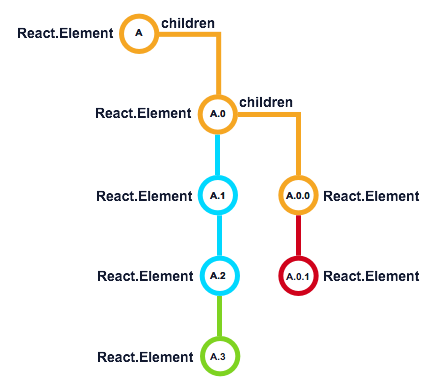Re-rendering and Children Updates
Once again we return to render(). Now that our props and state are all updated1 we can apply them to our content and children. Just like the initial render, all the same rules and conditions apply.
Unlike our first render, React performs different management when it comes to the generated Elements. The main difference is around the initialization phase and children Elements of the Component.

React compares the current Element tree structure returned from the render() method. React uses the generated keys (or assigned keys) to match each Element to a Component instance. React determines if we have new instances (A.3), removing instances (A.0.1) or are updating existing instances (A, A.0, A.0.0).
If the keys are the same, then React will pass the props to the existing instance, kicking off its Update life cycle. If we have added new Components or changed keys, React will create new instances from the Element data. These new Components then enter the Birth/Mounting phase.
Up Next: Post-Render with componentDidUpdate()
1 As mentioned earlier, the asynchronicity nature of state is now fully applied and can be accessed safely.